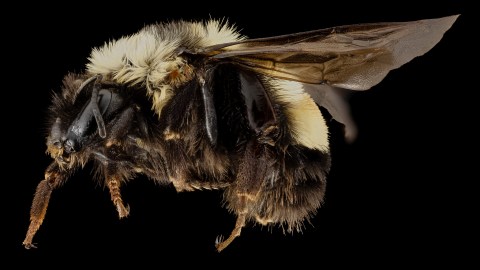It’s Time for this Bumble Bee to Come Under Government Protection

It has finally come to this: The U.S. Fish and Wildlife Service believes a species of bumble bee –the rusty patched bumble bee – should be under federal protection under the Endangered Species Act.
The petition was filed September 22, 2016 by the U.S. Fish and Wildlife Service, which attributes the decline in its report to disease, pesticides, climate change, and habitat loss.
The rusty patched bumble bee can be identified by the red coloring on its abdomen. You may be able to spot the bee if you happen to live in the upper Midwest or Northeastern part of the United States. Then again the species has suffered a great decline in its population – 90% since 1990 – so maybe not so much.
“[The] Endangered Species Act safeguards are now the only way the bumble bee would have a fighting chance for survival,” Sarina Jepsen, of the Xerces Society for Invertebrate Conservation, told Reuters.
It’s no secret bees have been dying off at an alarming rate, suffering from colony collapse, a disease which causes a number of worker bees to abandon the hive. This decline is thought to be caused by pesticides, which some researchers believe impairs the bees’ behavior in some way.
Scientists have pointed the finger specifically at neonicotinoid pesticides, typically used in agriculture, causing a scientific debate to become slightly politicized. However, if nothing is done, America could be losing some valuable free labor. After all, bees are responsible for pollinating 75% of the fruits, nuts, and vegetables we eat.
“Honeybee pollination alone adds more than $15 billion in value to agricultural crops each year in the United States,” the White House said.
Without pollinators, many flowering crops will require workers to go out into the field and manually induce pollination. To do this, you need to identify the male flowers, pluck them, and rub them up against the female flowers within a certain window of time during the day.
If these bees do fall into extinction, their absence will create quite a few job openings.
Get to know the more eccentric side of bees here, with Jonathan Keats.




